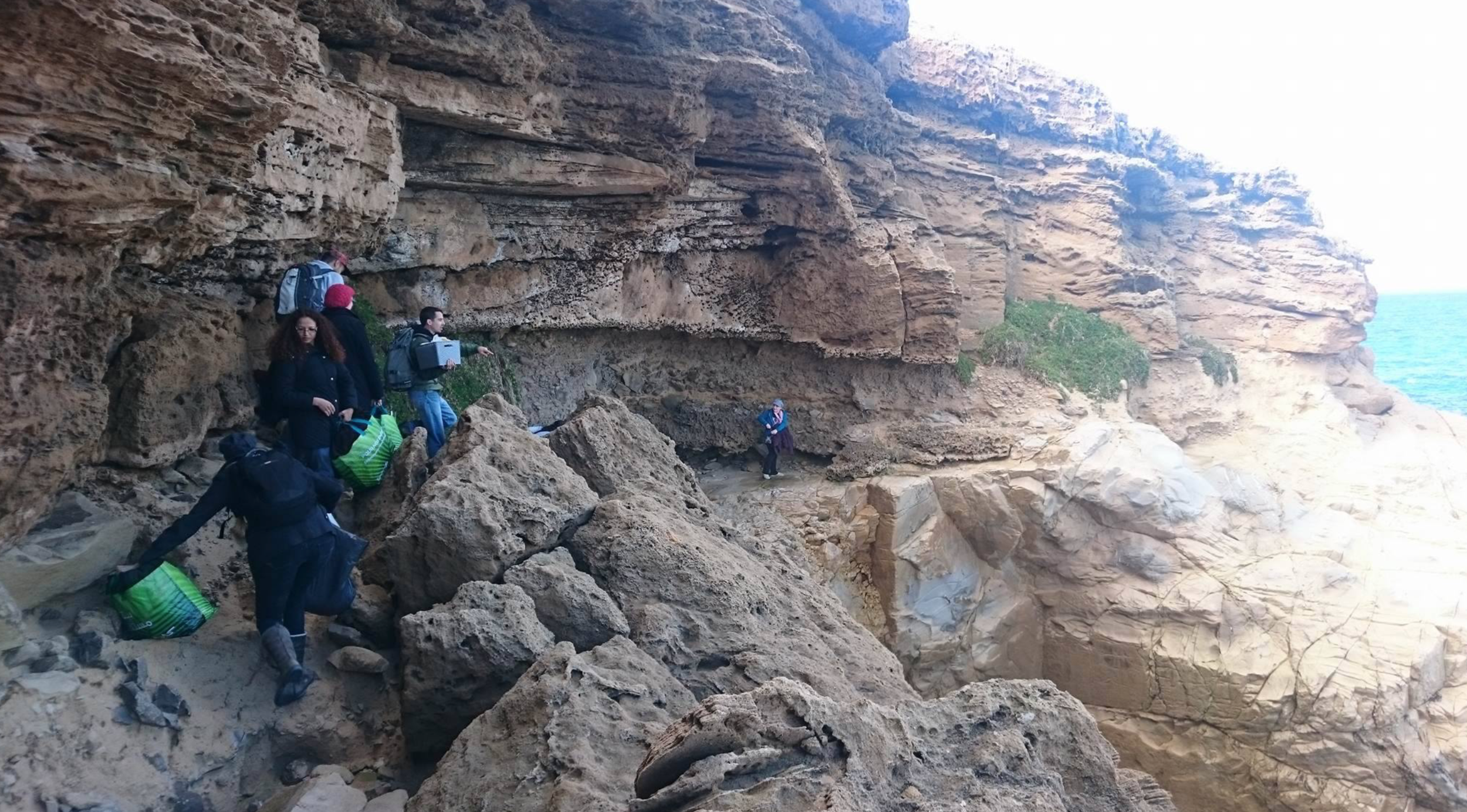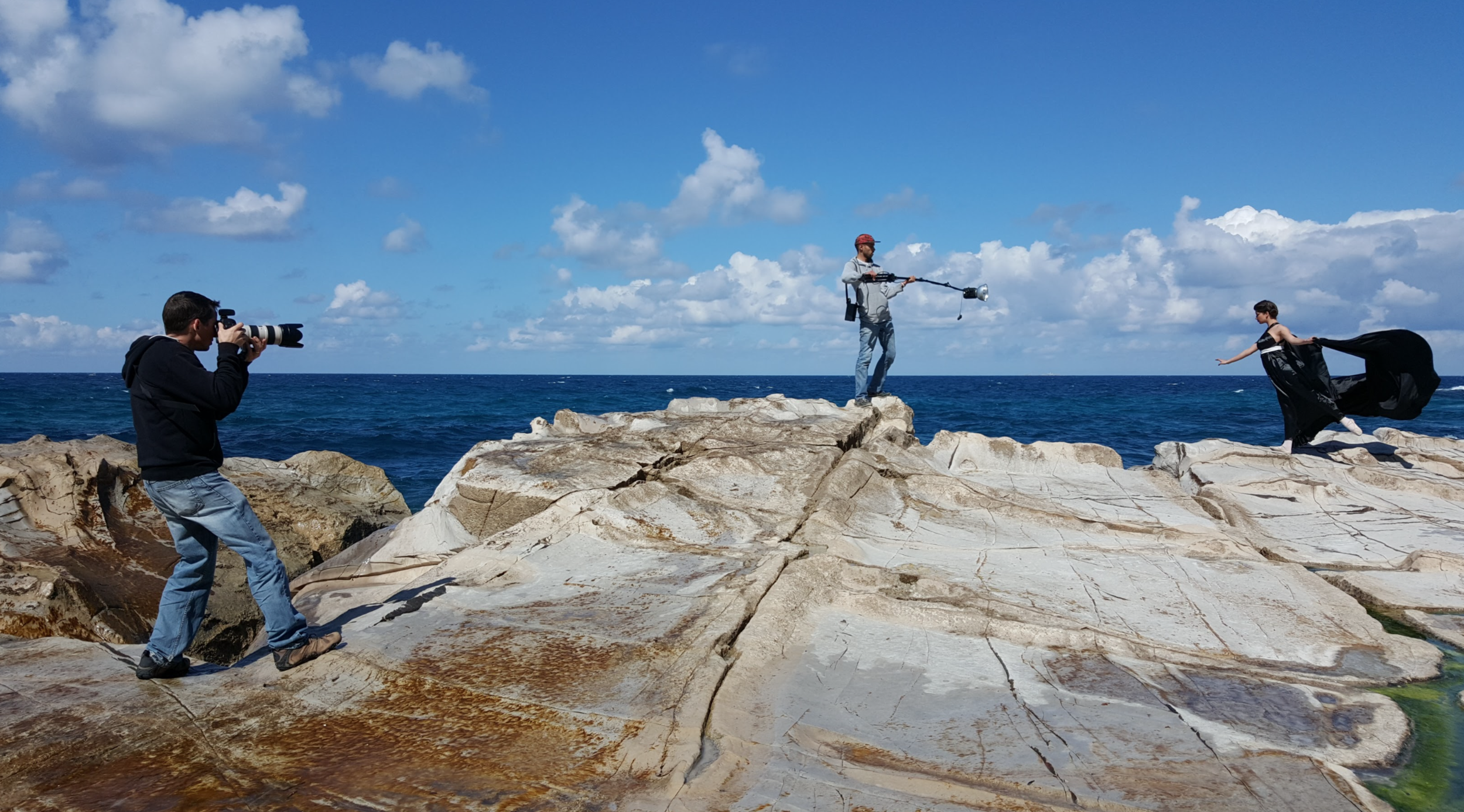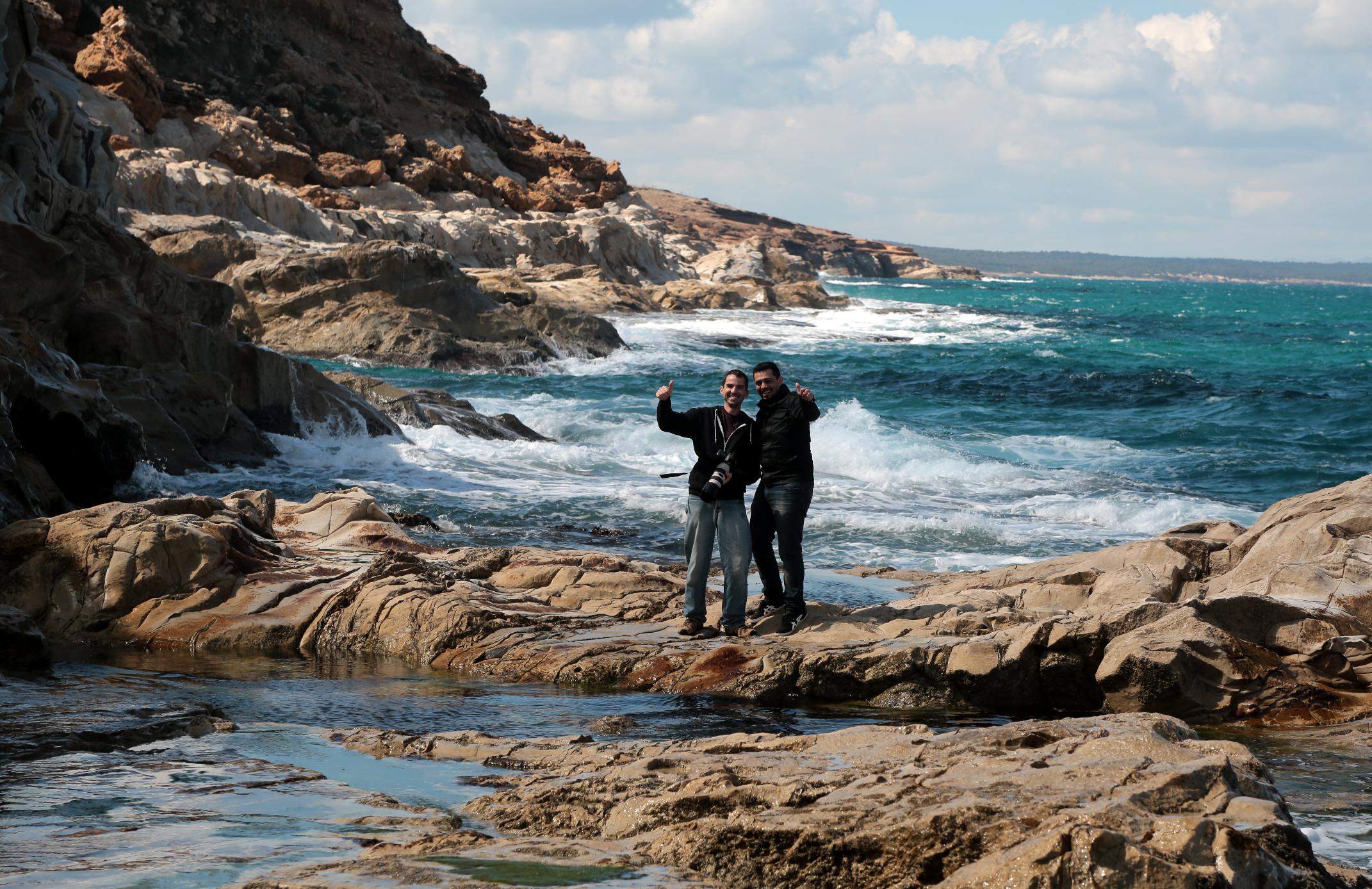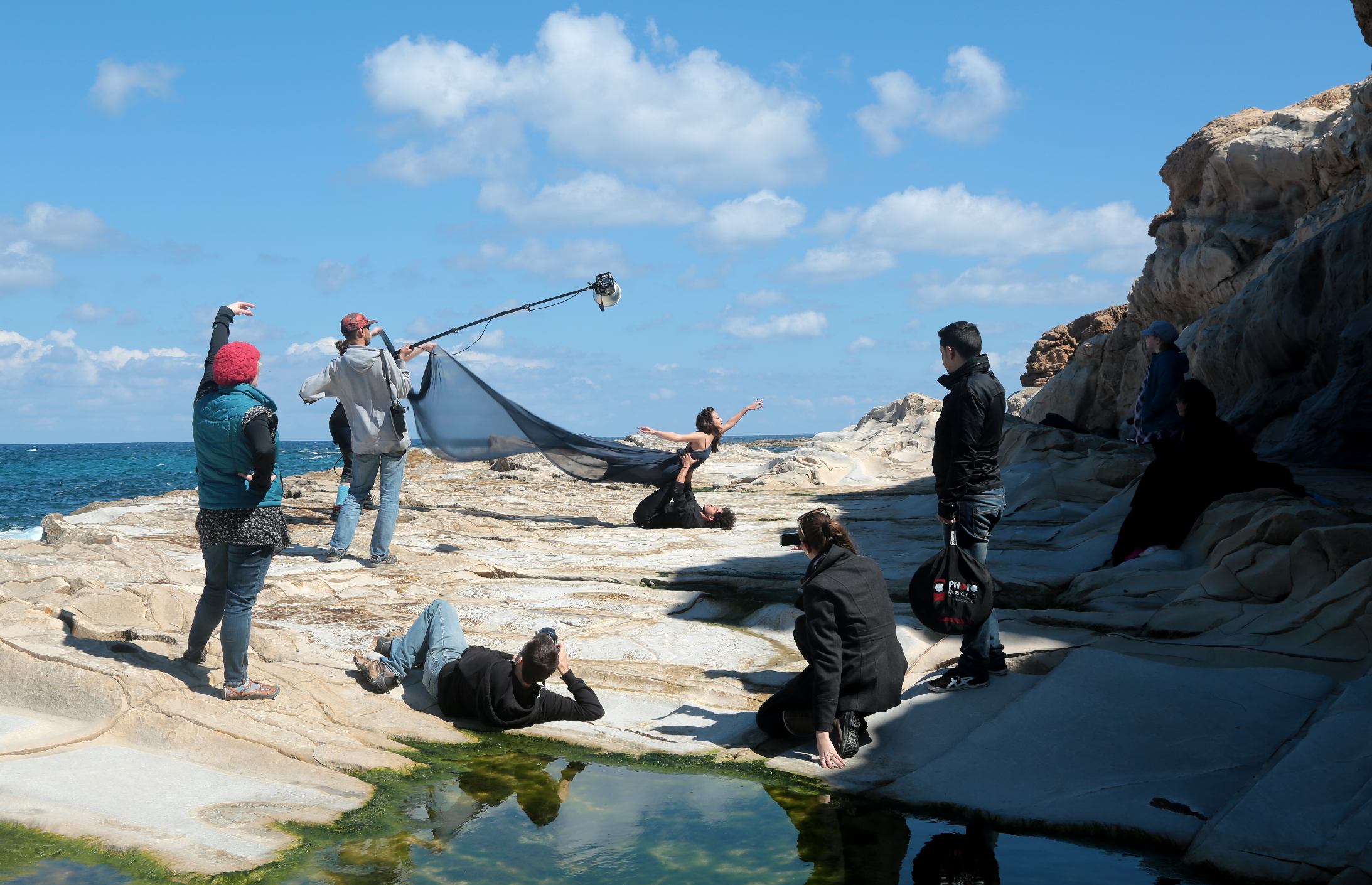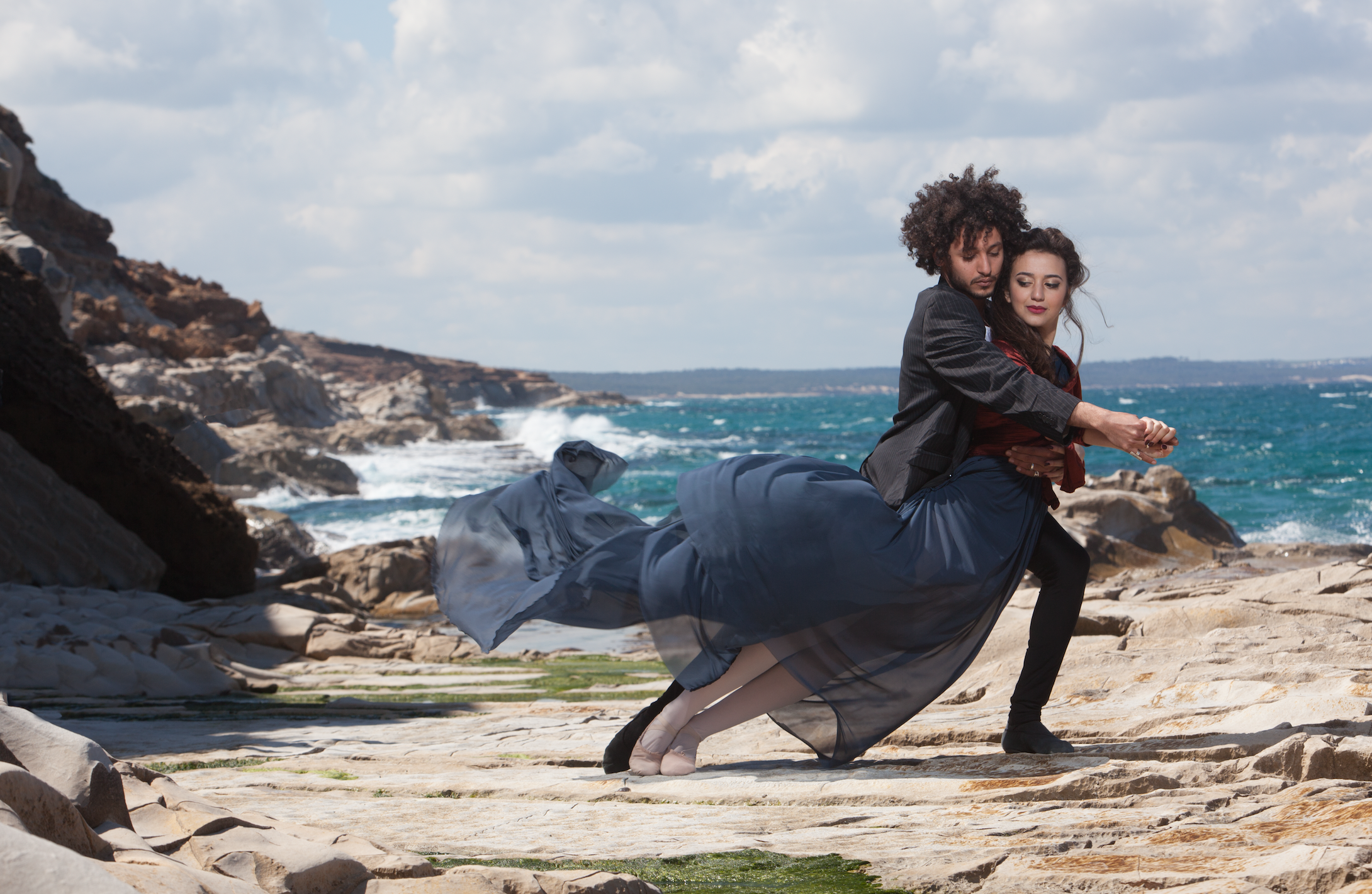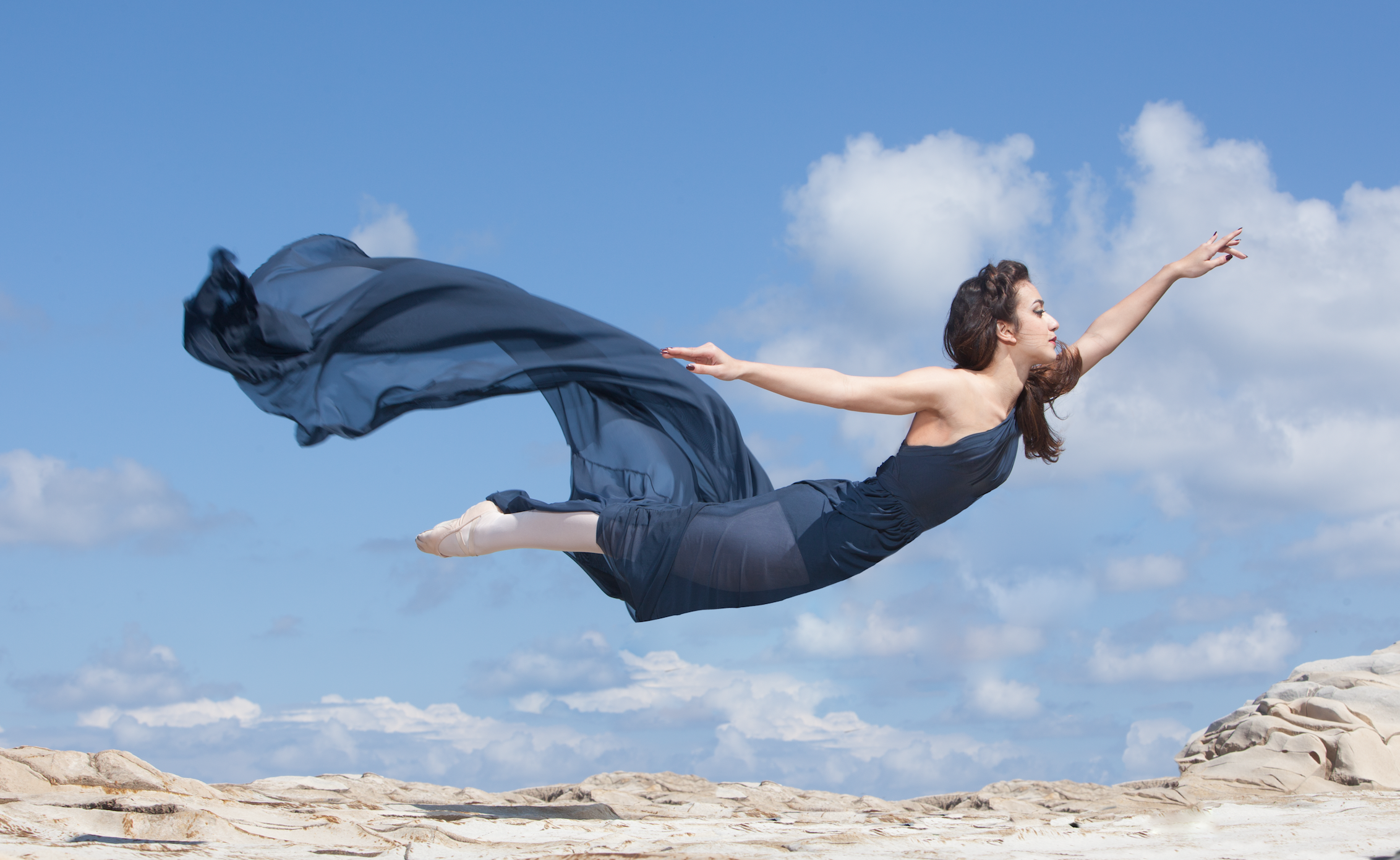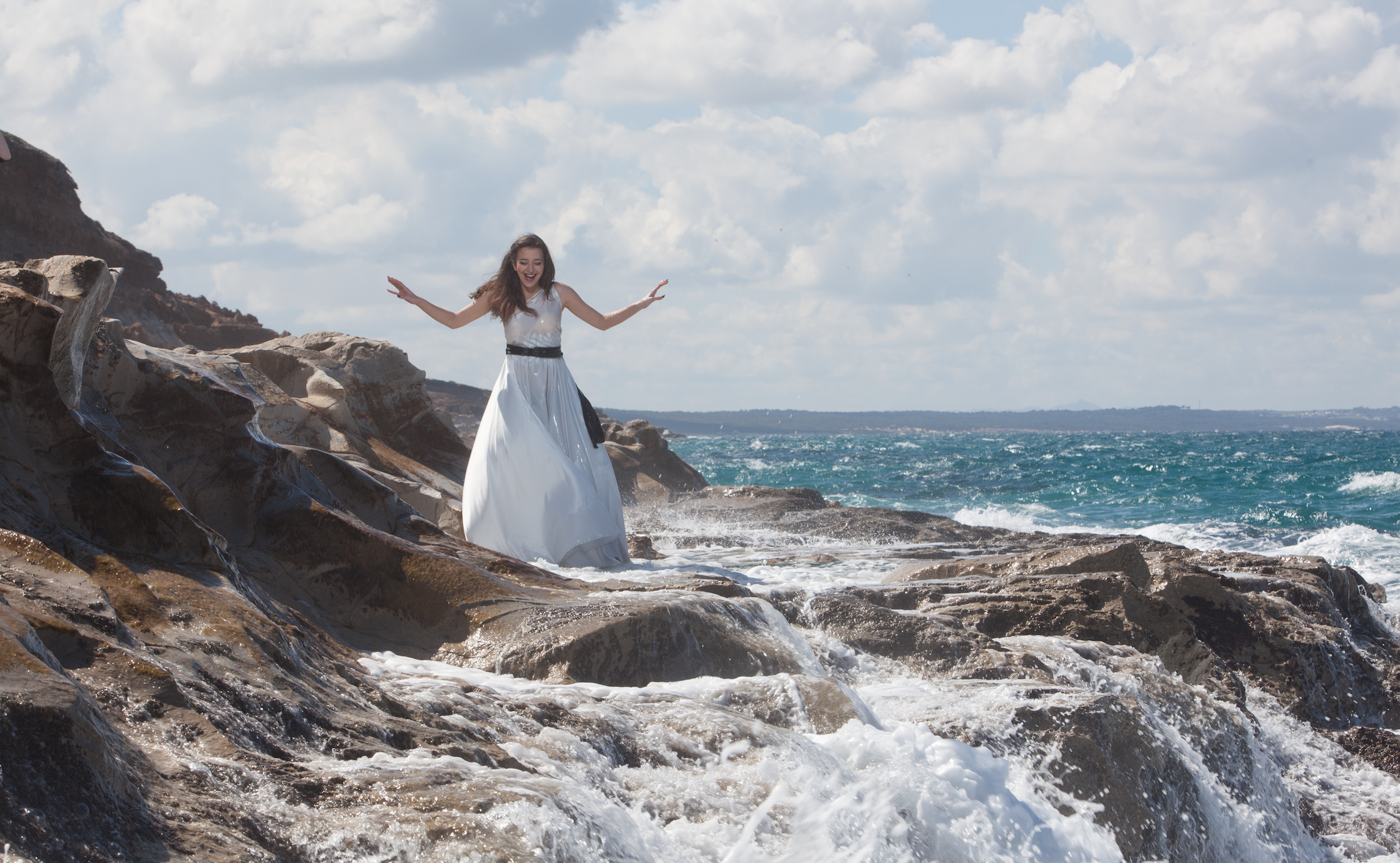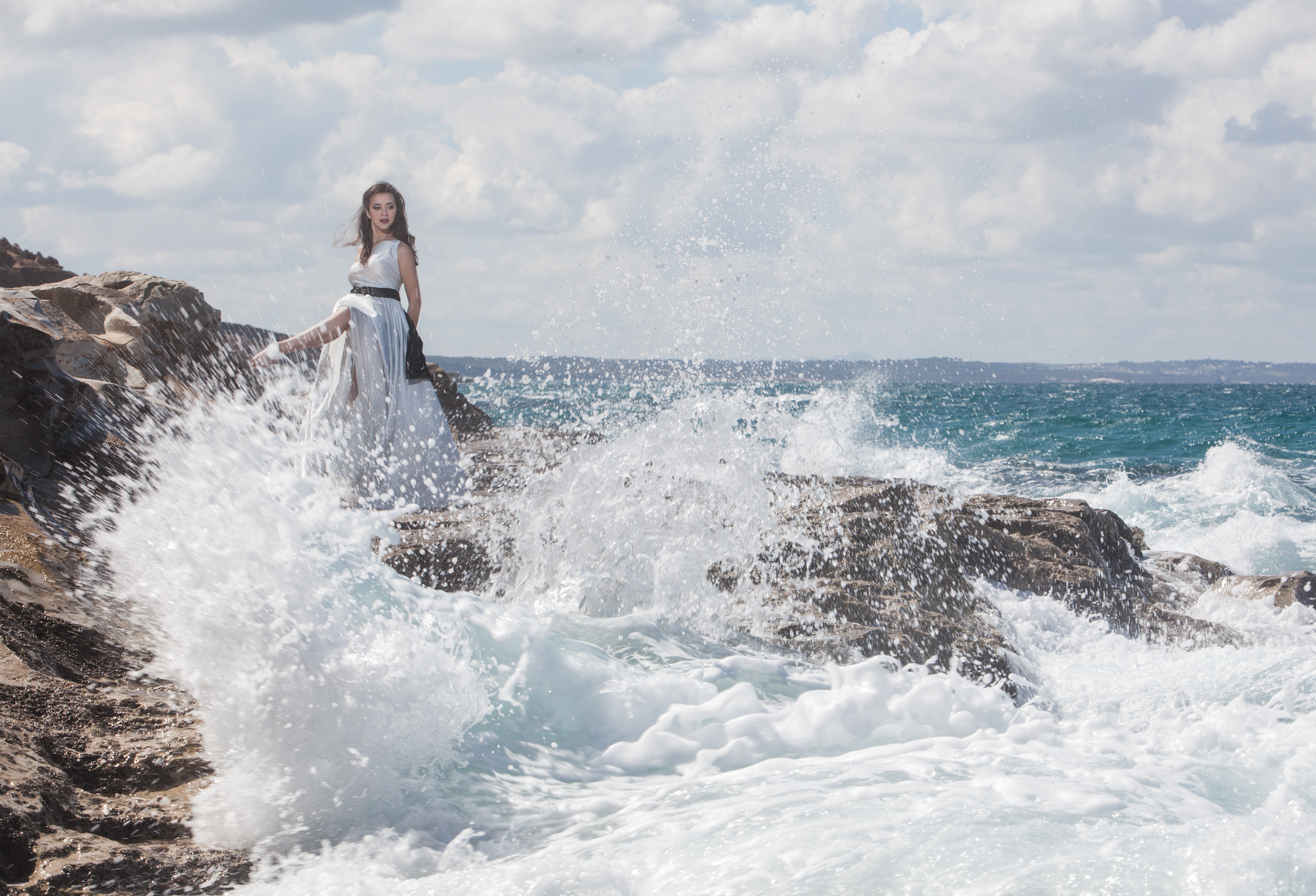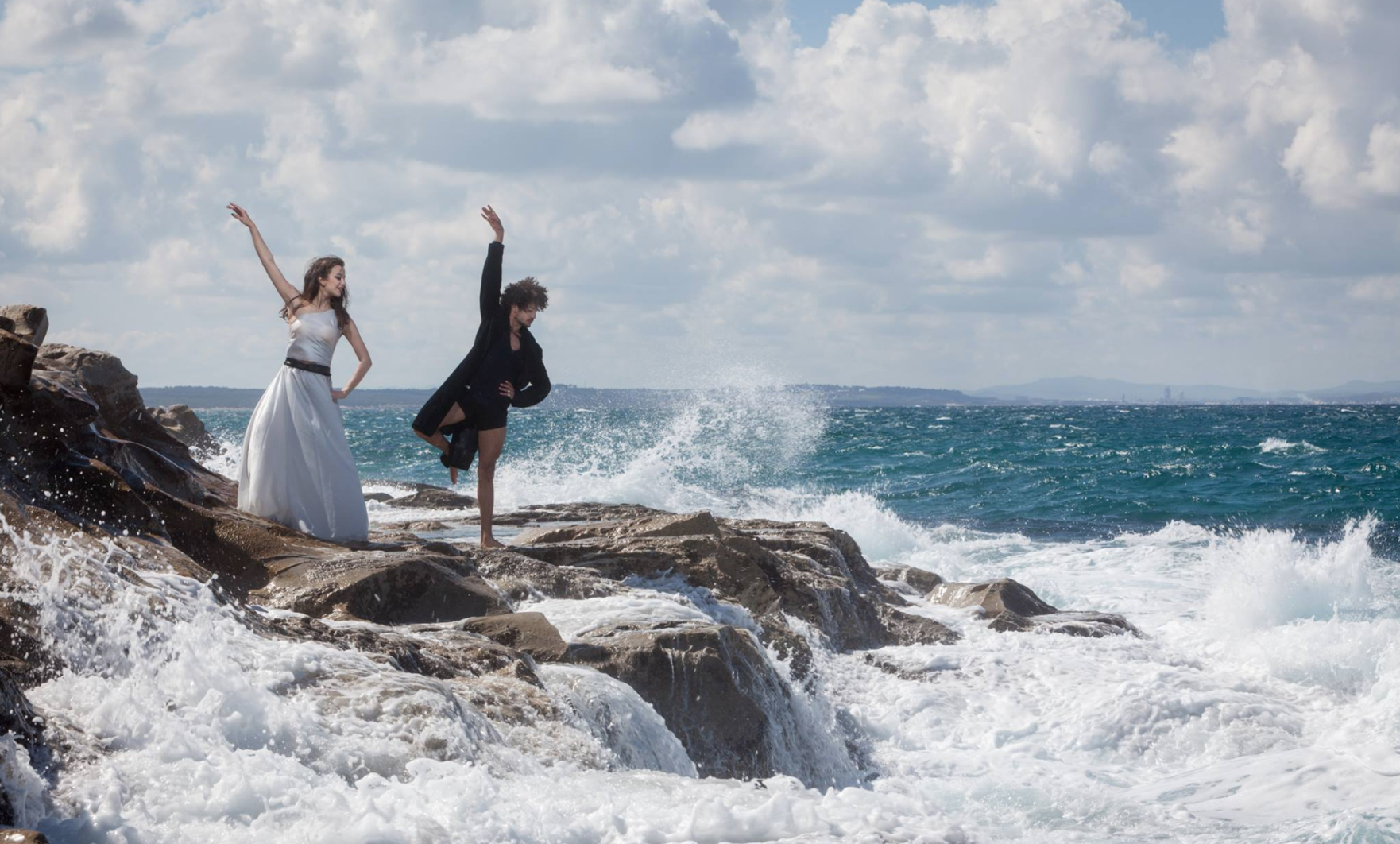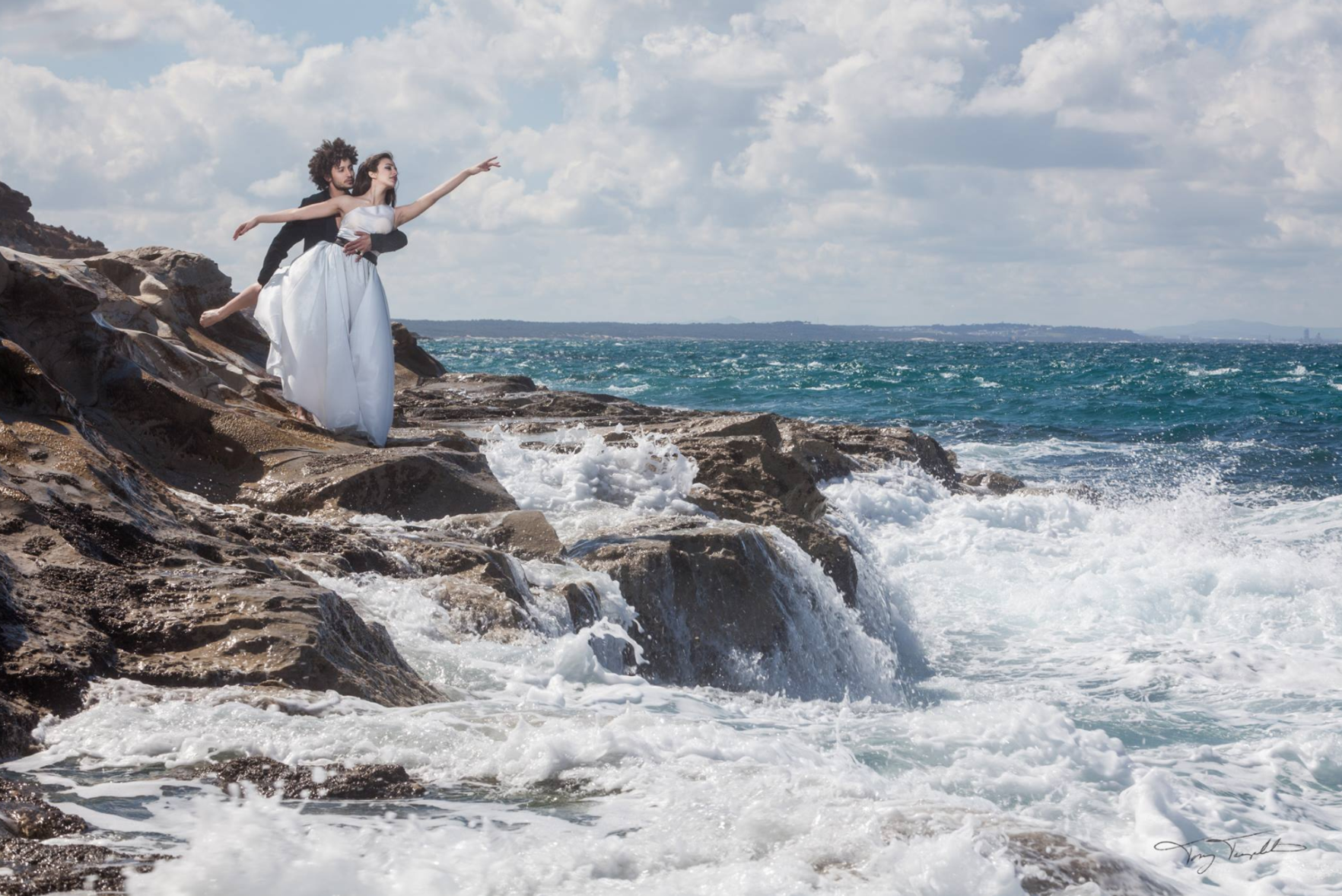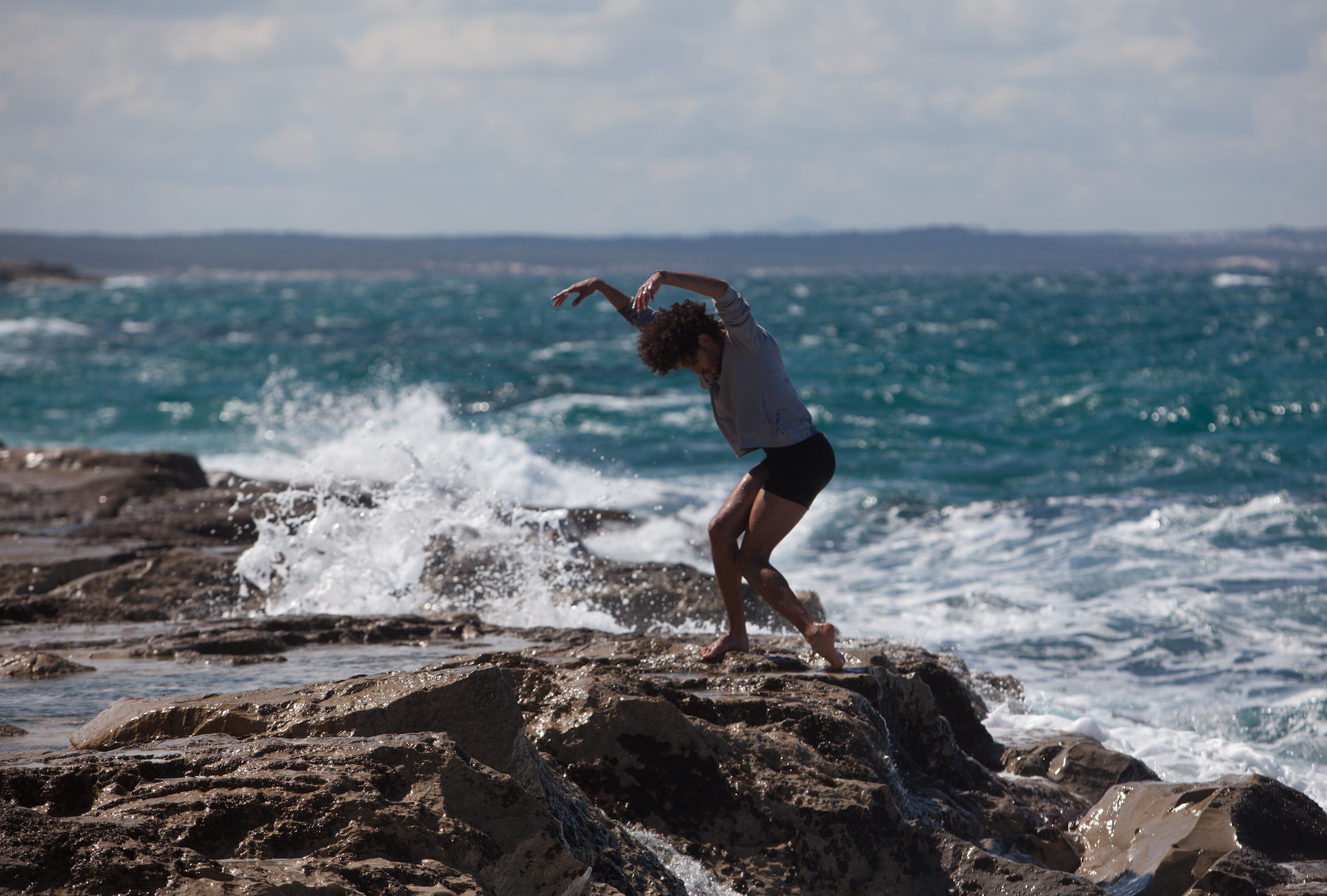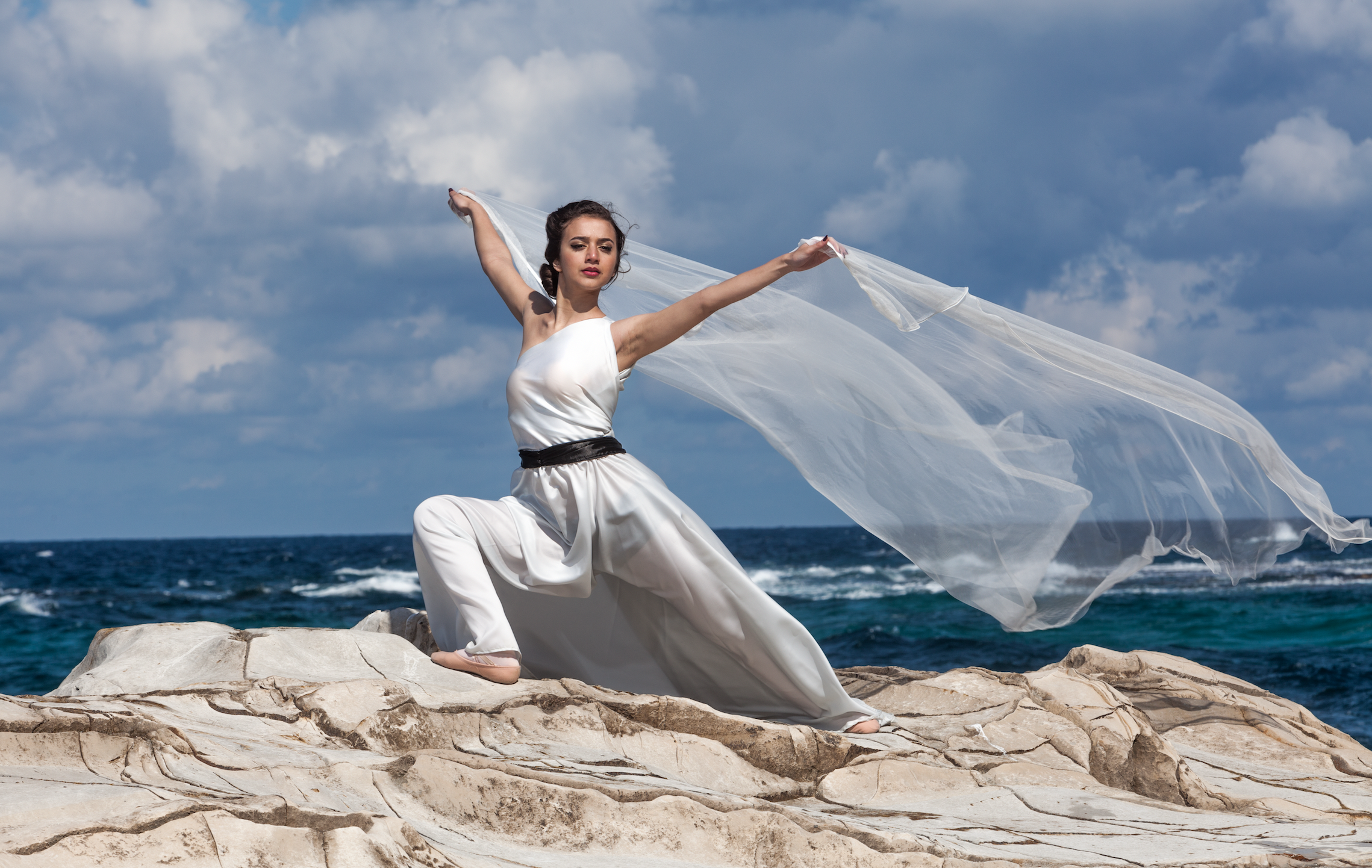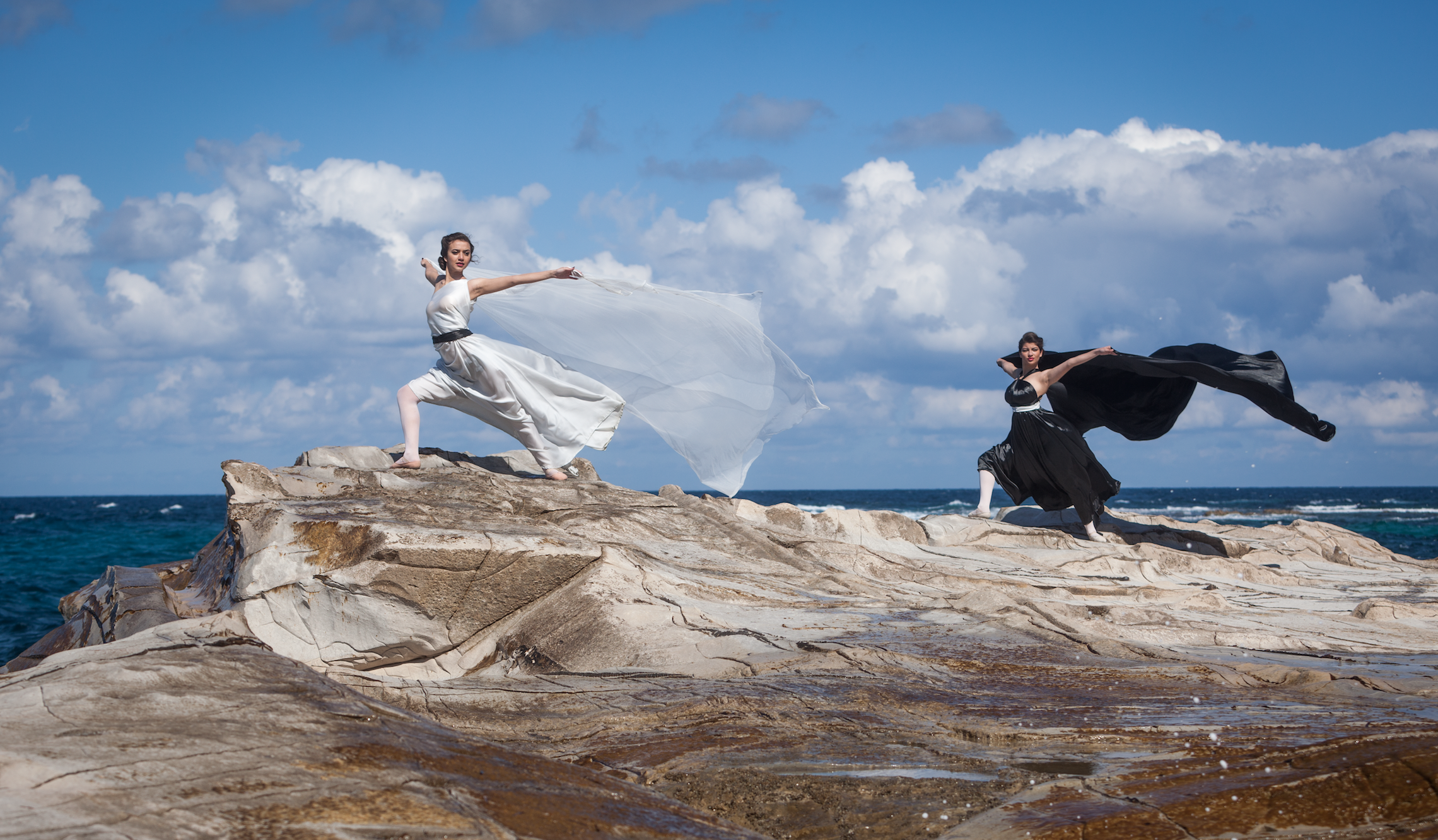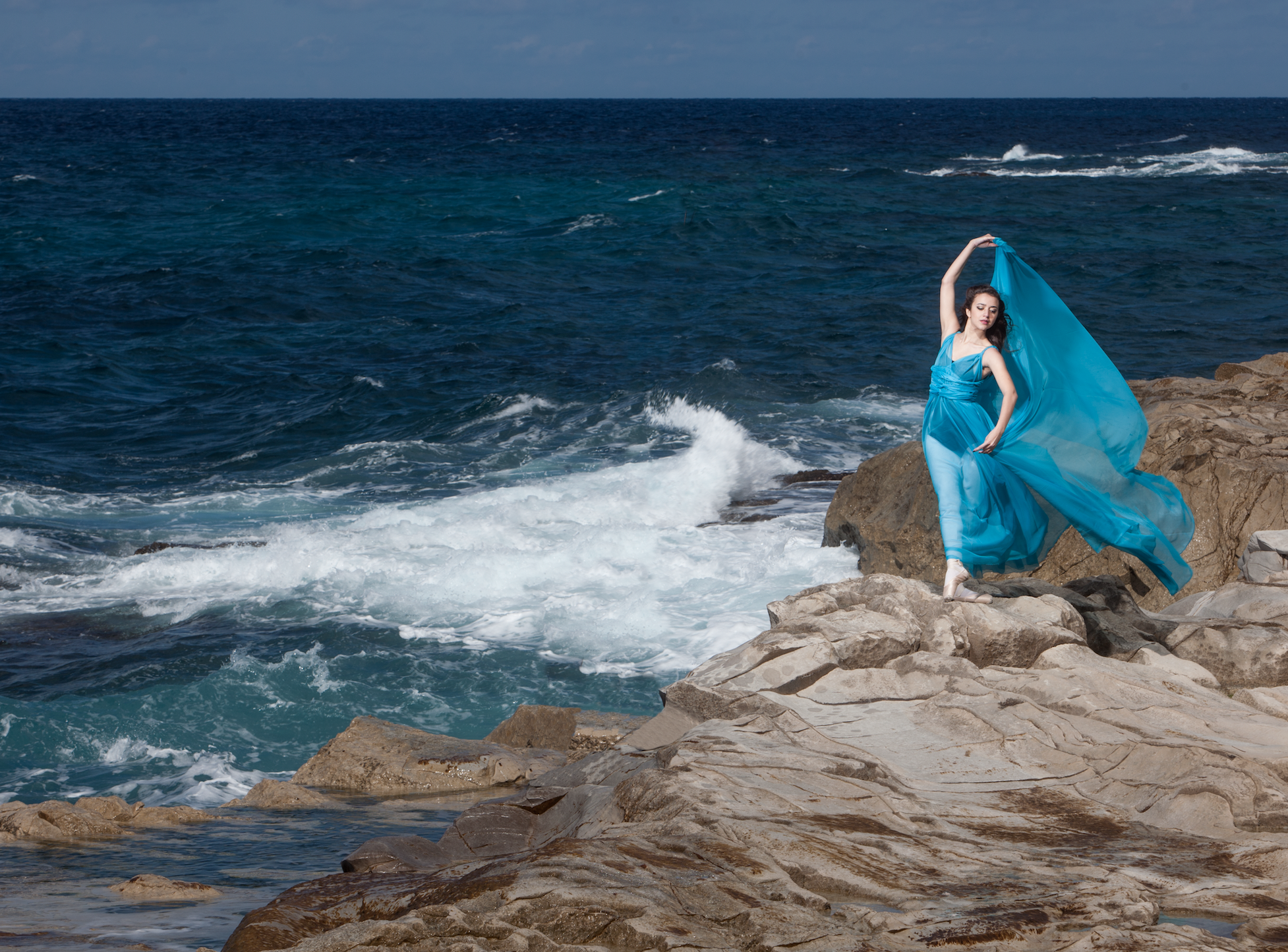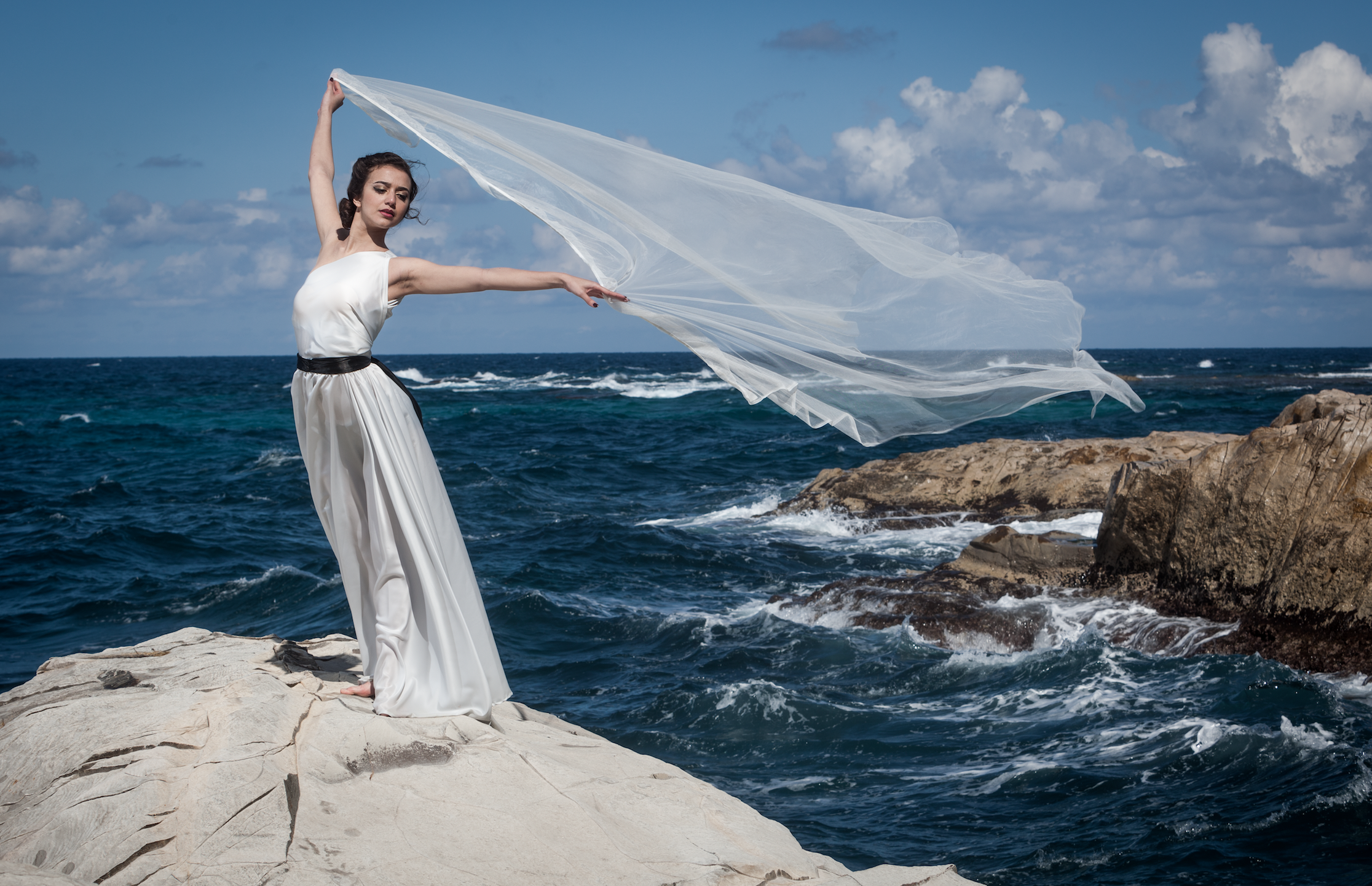dancers on the Mediterranean coast
Dali handed the last bag of gear down the cold aluminium ladder and we started winding our way along the trail cut into the cliff face. We shuffled along 30 feet above the churning white water, close enough to feel the spray on our faces. The width of the trail made me feel pretty safe but as I looked over our team of 12 I couldn’t help but chuckle to myself and wonder, “What in the world were you thinking!”
In my defense, I did ask them to wear good shoes; I knew we would be walking over some rough terrain to get to the shooting location. I had been planning this particular shoot for months. A friend of mine (Kristin) has experience with stage performance and costume design, so I talked to her about making some dresses for our dancers. She put together some amazing outfits in a very short amount of time. We also had someone helping with makeup, my assistant Dali helped me with the lights, and a few other people lent a hand. My dancers were Chakib, Zeineb and Cyrine. We had worked together a few times before and were quite comfortable collaborating and pushing each other creatively. On this shoot, it would take all of us working together to pull off some awesome images.
While doing a final scouting I realized the difficulty the dancers and the crew would have to scamper down the small cliffs next to the sea. I wanted to shoot on a large, relatively flat platform of rock perched right next to the sea. The stark contrast of the rock to the water was incredible, and if we had some wind it would allow some of the sea spray to make it into the images as well. Because of the cliffs I rented an aluminum extension ladder and we took it with us, strapped to the roof of the car. The dancers didn’t ask too much about the ladder but eyed it with curiosity.
Arriving at the location (after about one hour in the car) I noticed that the conditions were nothing like the day before. The light breeze from yesterday had become a force to be reckoned with as it thrashed the waves against the rock, which meant this shoot just got much more interesting. By the time we got to the first small cliff, the dancers and my crew were looking at me like I was a bit nuts. One by one we went down the ladder and passed all the bags of gear and wardrobe down from person to person until finally we were all safely at the shooting site. No injuries, no panic attacks, and everyone was even more excited than before for the shooting to begin.
Communication soon proved to be a challenge for us as the wind blew away everything that was said before it could be heard. Our voices soon tired from yelling back and forth to each other. Nevertheless, the wind worked wonders on the beautiful dresses that Kristin created for our dancers! The movement of the fabric was everything I hoped for.
As Kristin and our makeup artist readied the dancers, I scouted the rock platform to decide exactly where we would shoot. The pool of water I saw the day before and hoped to use had become a churning whirlpool that emptied and filled rapidly, making it not ideal for my dancers. We chose three spots that we would use and started getting the lights ready.
For my lighting I planned to use the sun as a back or rim light and one strobe as my main light. This would be all the gear we could handle in this wind. For my main light I needed something that would allow me to match the sun, so I couldn’t use a speedlight. I went with my Paul C Buff Einstein plugged into a vagabond II battery pack. This was put on a stand which Dali used like a monopod. The only modifier I used was an 8.5 inch silver reflector to help shape the light and give it a bit more throw. The wind was much too strong for Dali to handle a softbox, octobox, and certainly too much for an umbrella. Additionally I wanted the fill light to be a bit harsher, just like the rim light coming from the sun, so the smaller reflector would do perfectly. There were a few times that I wished I had a bit more power out of my light, but for the most part the Einstein kept up really well.
I triggered the light with my RadioPopper Nano triggers. They are simple and bulletproof, and the radio is incredibly strong! (I once triggered a strobe positioned well over 100 meters away over rough terrain and it worked flawlessly.) My only complaint about these units is the batteries. CR123… not sold at every convenience store and often a pain to find when you are in a bind. I recently purchased some rechargeables so I don’t have worry about them.
I was using a Canon 5dmk2 as my camera for this shoot (this was before I moved to Sony Alpha cameras), and for my main lens I chose the 70-200L 2.8IS. I absolutely love this lens for this style of shooting as it gives me a lot of flexibility over how my background looks and the compression is beautiful. I will say that this setup is a bit heavy -- and very noticeable after working with it for five hours -- but the images are worth the weight.
Once we started shooting and the dancers saw the images we were making the excitement really took off. They were totally engaged and were willing to try things that were bordering on dangerous. I had Chakib and Cyrine near the edge hoping for some spray to enter the bottom of the frame. After a few tries Cyrine moved to the next ledge down where the water crashed spectacularly and steadily. Chakib was about to join her when a wave crashed and soaked her in freezing water. Once she regained her composure, Chakib joined her and we made a few incredible images before the next large wave washed over that spot.
I love the challenge of this style of shoot. The weather is uncontrollable; the light, the wind and the waves all must be worked with, not against. You can modify, work around, or adapt to what you are given but in the end, the environment sets the tone for everything you do. It requires quick thinking, experience and knowledge of your craft, and a thorough understanding of your gear; what it can do for you and how to push its limits. From the human side of things, having this large of a crew looking to me for direction is also a challenge. I have to keep my wits about me, know where we are going and some idea of how to get what we need for the shoot. It also pays to work with amazingly talented and hard working people!
My advice to those wanting to make great images: plan audacious projects that push your limits. It is a great idea to repeat a skill enough times to understand and master it, but sometimes you need to try something that scares you. Now get out there and make some exciting images.
If you made it this far, here is a short video with some behind the scenes material. Enjoy.
Take care
